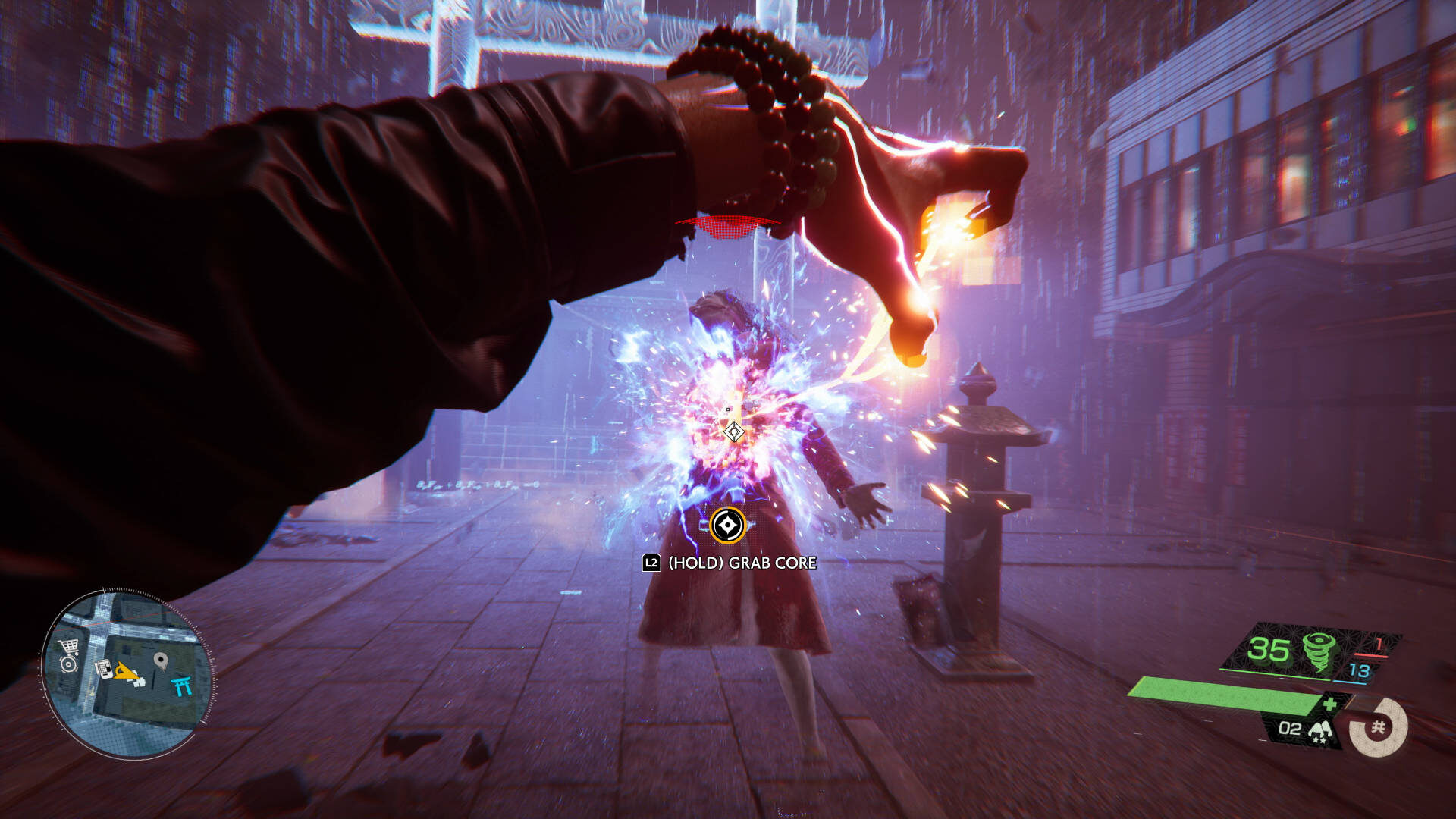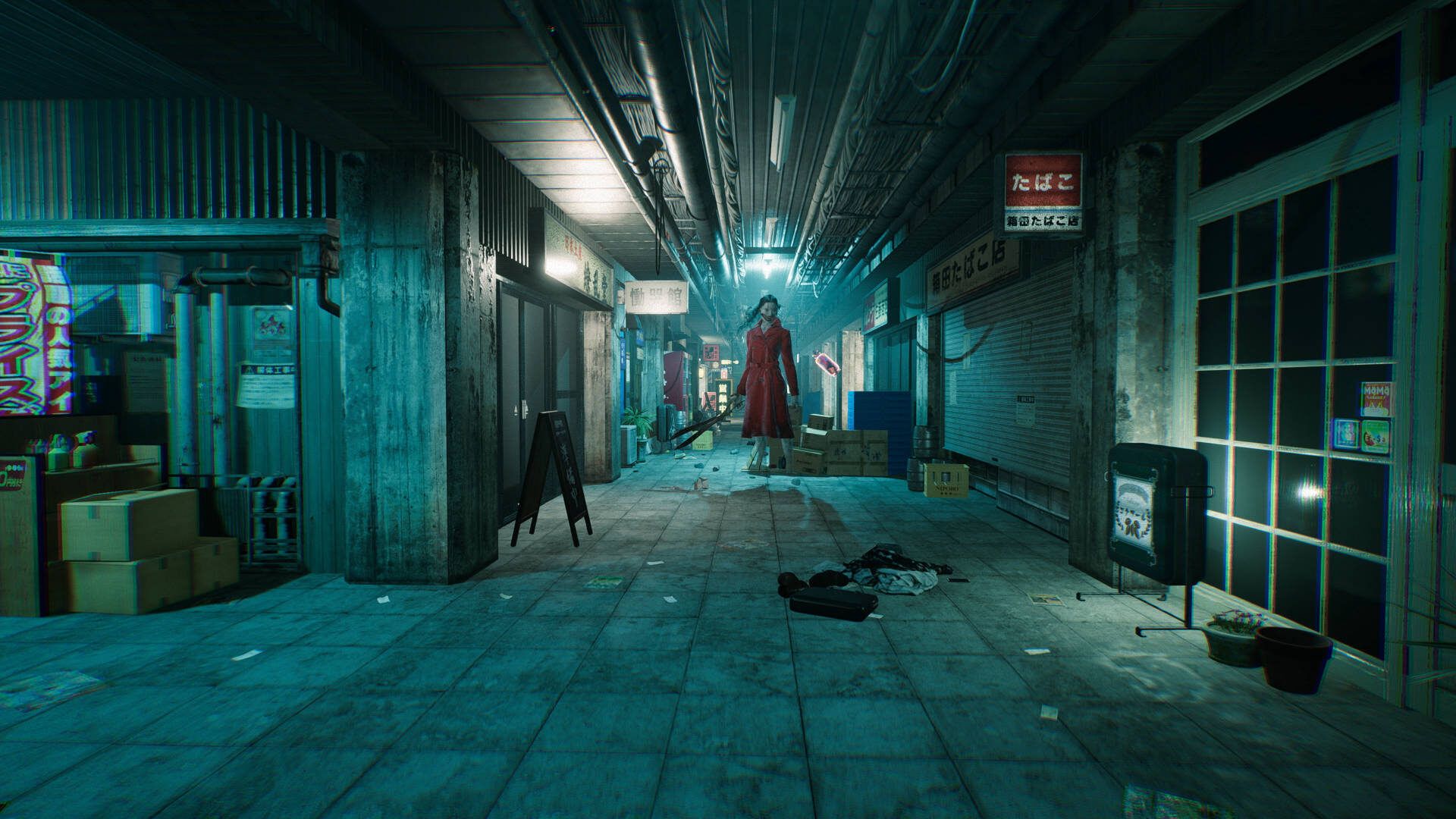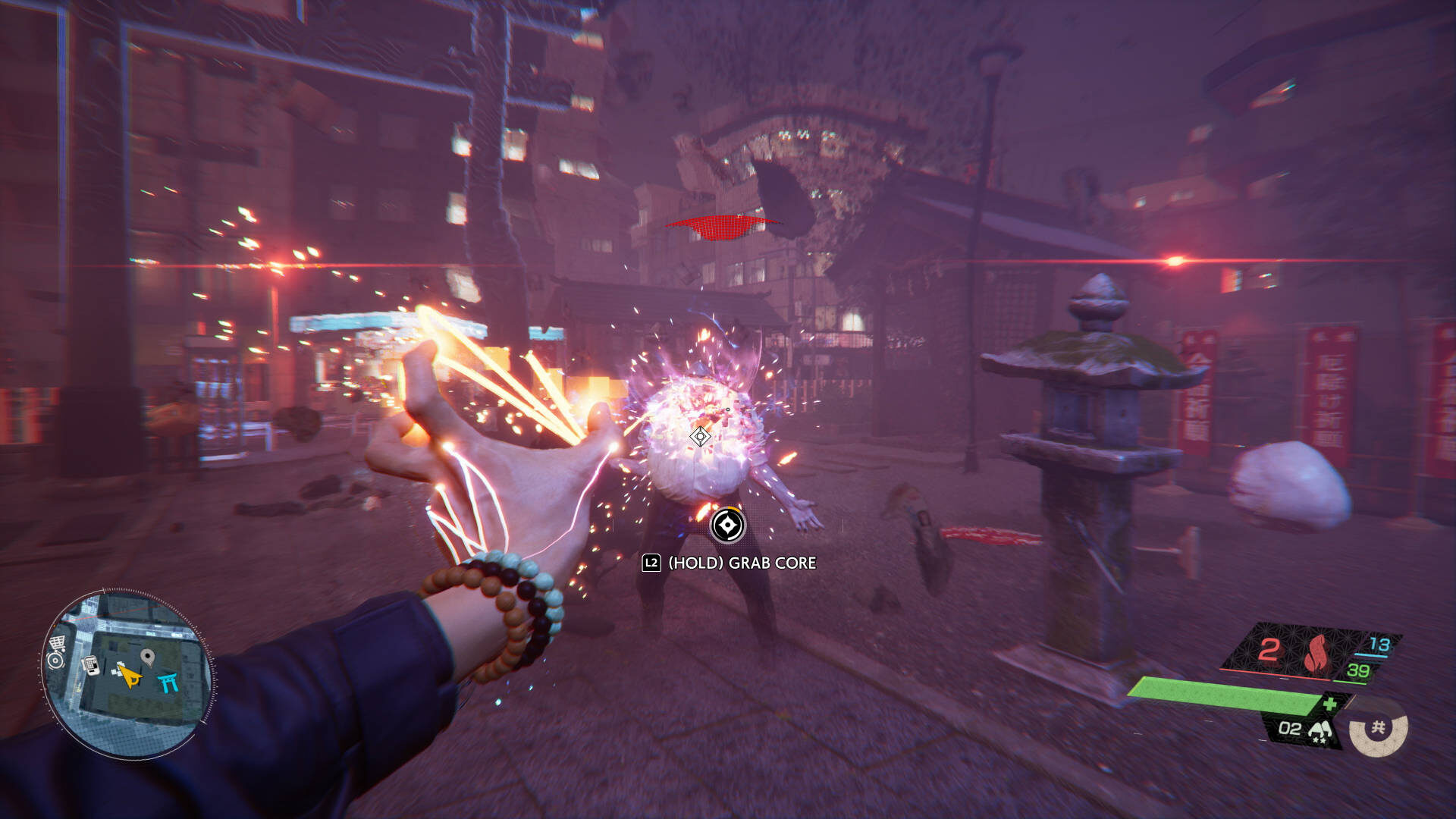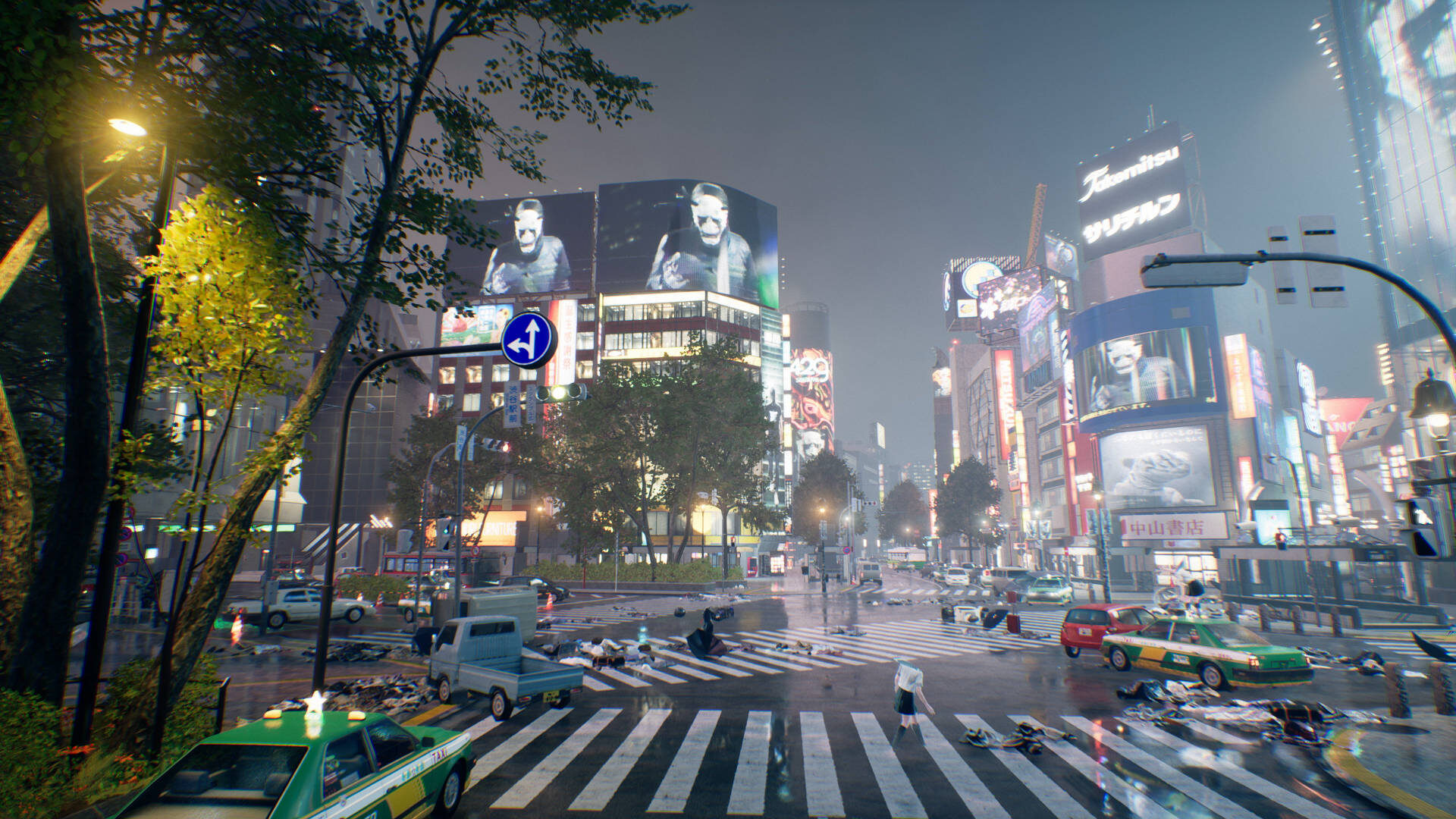Over the years, I’ve had many chances to get a deeper look at games before their release. Sometimes, those previews don’t end so well, as seeing the game outside of carefully crafted trailers exposes the game’s shortcomings or misguided ideas. Other times, the project might look and play okay, but not live up to expectations built up from all of the pre-launch hype.
Thankfully, for me, Ghostwire: Tokyo falls into yet another category: the early look that leaves me more excited for a game than I had been the day before.
It’s not that I didn’t think Ghostwire would serve as an interesting next project from Shinji Mikami’s Tango Gameworks following the release of The Evil Within 2. First-person games of any type remain a rare direction for Japanese developers to take, and when we do get such releases, they often offer a unique twist on the genre. And, on a personal level, I can’t help but think back to Atlus’ Maken X when seeing Ghostwire, which was another first-person closer-combat title that infused its fast action gameplay with a mix of modern technology and mythological Japanese themes.
The concern I had for Ghostwire: Tokyo was if its particular blend of combat and atmosphere would gel together to give us a compelling gaming experience. While I haven’t had the chance to go hands-on yet, I did get to check out about 45 minutes of uninterrupted gameplay footage—which was much longer and showcased different segments than what you might have caught yesterday during the game’s February 2022 Official Showcase. Getting that proper look at the game, I’m now much more convinced that the ideas being put into Ghostwire will indeed come together in the end.
Sure, some of what I saw feels familiar to other open-world games—as, yes, this is not the focused, linear experience I had once assumed it would be—but there’s also plenty here that genuinely feels fresh.
To kick things off, Tango Gameworks’ Kenji Kimura appeared onscreen, and offered up the following statement: “Hi, I’m the director of Ghostwire Tokyo, Kenji Kimura. Next spring, everyone will disappear from Tokyo. Please look forward to it.”
That line admittedly made me laugh a little, given the alternate context you could give to “looking forward” to everyone in Tokyo disappearing. However, that is exactly the situation that kicks off Ghostwire: Tokyo’s narrative. Almost everyone in Tokyo has mysteriously vanished, and it’s up to our main protagonist Akito to try to find out why—while simultaneously battling the bizarre monsters that have taken the place of those inhabitants.

In the gameplay preview yesterday, viewers were briefly introduced to KK, a man who will play an important part in Akito’s journey. While I don’t yet know his full backstory, I did learn from that showcase that KK somehow enter’s Akito’s body, and is the reason we see black smoke emanating from our hero. Beyond that, from our extended media preview, we got another clue, as KK explained that he “was one of this country’s guard dogs, but I ran with a pack of strays.”
The knowledge—not to mention resources—he acquired during that part of his life will be a big help to Akito throughout the course of the game. For example, the bow that we got a glimpse of yesterday came from KK’s apartment, and it looked like more goodies may await there as well. KK will also act as a voice in Akito’s head, helping to guide him (and us) through the streets of Tokyo while advising on the matters of yokai.
(If you tend to dislike games where a lot of conversation goes on between the main character and some sort of partner character, then I’ll warn you that I heard a lot of chatter between the two men during our preview.)
Many of your encounters in Ghostwire: Tokyo, at least from what we saw, will fall into one of two types of beings: those yokai, aka spirits from Japanese folklore, and The Visitors, which come across as twisted manifestations of former humans. One of the interesting elements of The Visitors for me is that, rather than being grotesque monsters or bizarre beings of horror, all of the ones we saw resembled average, everyday people from Japan—just with something not quite right about them. Umbrella-wielding salarymen with no faces. Seifuku-sporting schoolgirls with no heads. Children in yellow raincoats with glowing red eyes looking out from under their hoods. I almost find these kinds of normal-but-not enemies more unnerving than if the team had simply tried to come up with a bunch of creepy monsters. Not that there aren’t creepy things waiting for you in the game, of course.

There’s a lot going on in terms of gameplay in Ghostwire: Tokyo, but there’s two specific things I want to point out. The first—and maybe this was something that was already announced, but I myself hadn’t picked up on yet—is that simply attacking enemies isn’t enough. After doing enough damage to them through his supernatural abilities, Akito must use the Ethereal Weaving technique he gains from KK to pull out their spirit cores. If he doesn’t, the spirit can continue to fight. It certainly isn’t a new concept amongst action games, but I think it’ll help give Ghostwire’s combat an extra layer of depth beyond what it would otherwise have.
The other is the use of katashiro, human-shaped dolls made out of paper that you’ll no doubt have seen before in other games or anime that deal with Japanese spirits. After you take down Visitors, you can use a katashiro to absorb the spirits of humans that those foes held captive. Each doll can only hold a set amount of spirits at any one time, so you and Akito will need to find a phone booth—yes, they do still exist both in this Tokyo and the real-life one—and transfer the spirits to safety through the phone lines. (Let’s be fair: Cell phone reception is too inconsistent to trust with trying to save human spirits.)
Another of Ghostwire: Tokyo’s elements that I really appreciated during our preview was the overall art direction of the game. On a more grounded level, the recreation of Tokyo we’re let loose is both aesthetically and technically beautiful. When things start to get weird, the visual effects and world-warping techniques the team at Tango are building into the game produce some legitimately cool moments—though that artistic flair shouldn’t come as a surprise for those who have played either Evil Within release.
At one point during our preview, main antagonist Hannya trapped Akito inside a spiritual barrier, leaving our hero to scour an apartment complex for a set of barrier stones. While the mission was simple—destroy all the stones, and the barrier will fall—getting to them wasn’t easy. The closer Akito got to each stone, and the deeper into the complex he ascended, the more reality became corrupted. In a series like Silent Hill, you know what to expect in those moments: darkness, horrifying sounds, and a whole lot of rusty metal. In Ghostwire, on the other hand, the team seems to be putting a lot of work into coming up with a wide assortment of unique, visually interesting ways to mentally or emotionally put players off balance.

One other thing I do want to address is Ghostwire: Tokyo’s open-world nature, as I know some people have gotten burnt out on those types of games in recent years. Unfortunately, I can’t speak to how that world structure will work here, as we only saw a small section of the full map, with other parts clearly still needing to be unlocked. As well, we also saw very little of the sidequests that await, so I don’t know how prevalent—or required—they’ll be. The main one we did see had Akito tasked with saving an old woman’s yokai friend, and it was thematically appropriate, interesting in execution, and surprisingly short. Given I tend to not play a ton of games with sprawling maps littered with objectives, if that’s what Ghostwire: Tokyo ends up being, it won’t bother me. If, on the other hand, you’re one of those people tired of such games, definitely keep an eye out on the additional details we’ll no doubt get in the lead up to launch.
There’s a lot more I could say about what I saw in the extended gameplay preview for Ghostwire: Tokyo, but there’s also still a lot that I don’t know at this point. What I do know, though, is that everything that I saw only made me more excited to play the game when it hits PlayStation 5 and PC on March 25th. There are factors that some people might not like to see, like how it is indeed a more open-world experience, or that gameplay looks to be slower and more methodical, but those elements totally work for me here. And sure, I’m tired of Tokyo always getting the attention—really guys, can’t we set more games in Osaka—but the virtual representation of it we’re getting here looks to be a fantastic playground for an adventure that blends the modern and the macabre.
And whatI’m not at all tired of is Japanese developers bringing original ideas and creative twists to first-person games—and I’m now feeling more confident that that’s exactly what Ghostwire: Tokyo is going to provide.


Mollie got her start in games media via the crazy world of gaming fanzines, and now works at EGM with the goal of covering all of the weird Japanese and niche releases that nobody else on staff cares about. She’s active in the gaming community on a personal level, and an outspoken voice on topics such as equality in gaming, consumer rights, and good UI. Check her out on Bluesky and Mastodon.